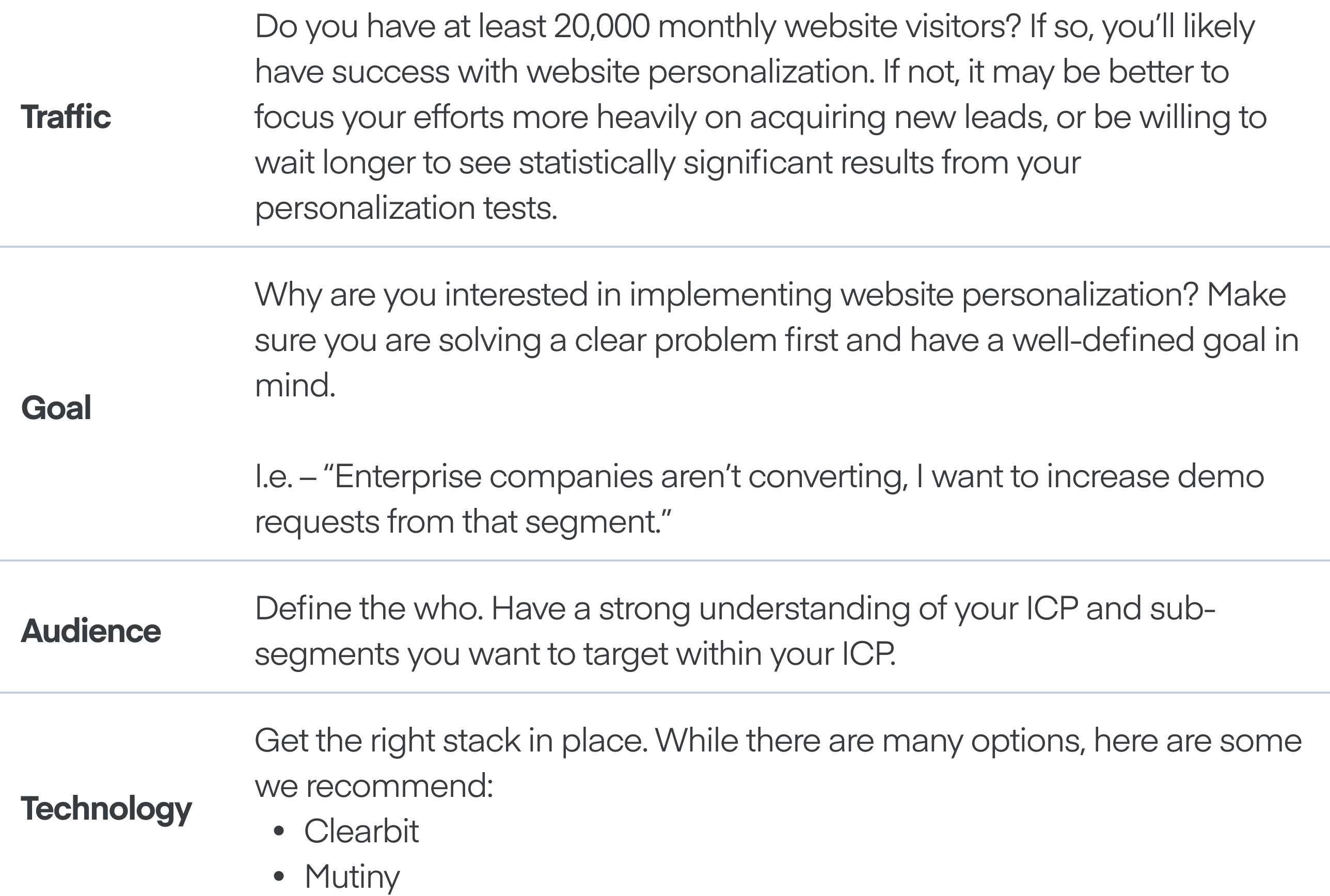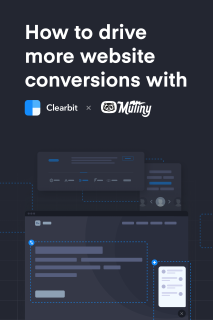Chapter 2
7 minutes
Laying the groundwork for a successful website personalization strategy
Before getting started with website personalization, you’ll want to consider the following four components:
- Website traffic
- Goal
- Target audience
- Tools
Let’s dive into each to help you identify if you have all the necessary inputs for a successful website personalization strategy.
Understand your web traffic
First, identify the number of monthly visitors to your site using a tool like Google Analytics. If you don’t have a high volume of web traffic, you likely won’t see significant results from implementing website personalization.
Generally, we’ve seen that having around 20,000 monthly site visitors enables you to justify the investment in website personalization and generate statistically significant results in a timely manner. However, there are many variables at play, and having a smaller audience just means it will likely take more time to achieve statistically significant results.
Companies with low volumes of web traffic should first focus their efforts higher in the funnel, on acquisition campaigns that bring more visitors to the site. Then, once you’ve increased web traffic, it makes sense to invest in website personalization.
💡Check-in: Using Google Analytics, navigate to audience → overview, set the time parameters for the last 30 days, and look at the number of users in that timeframe. Use this number to gauge if it makes sense to proceed with building a website personalization strategy.
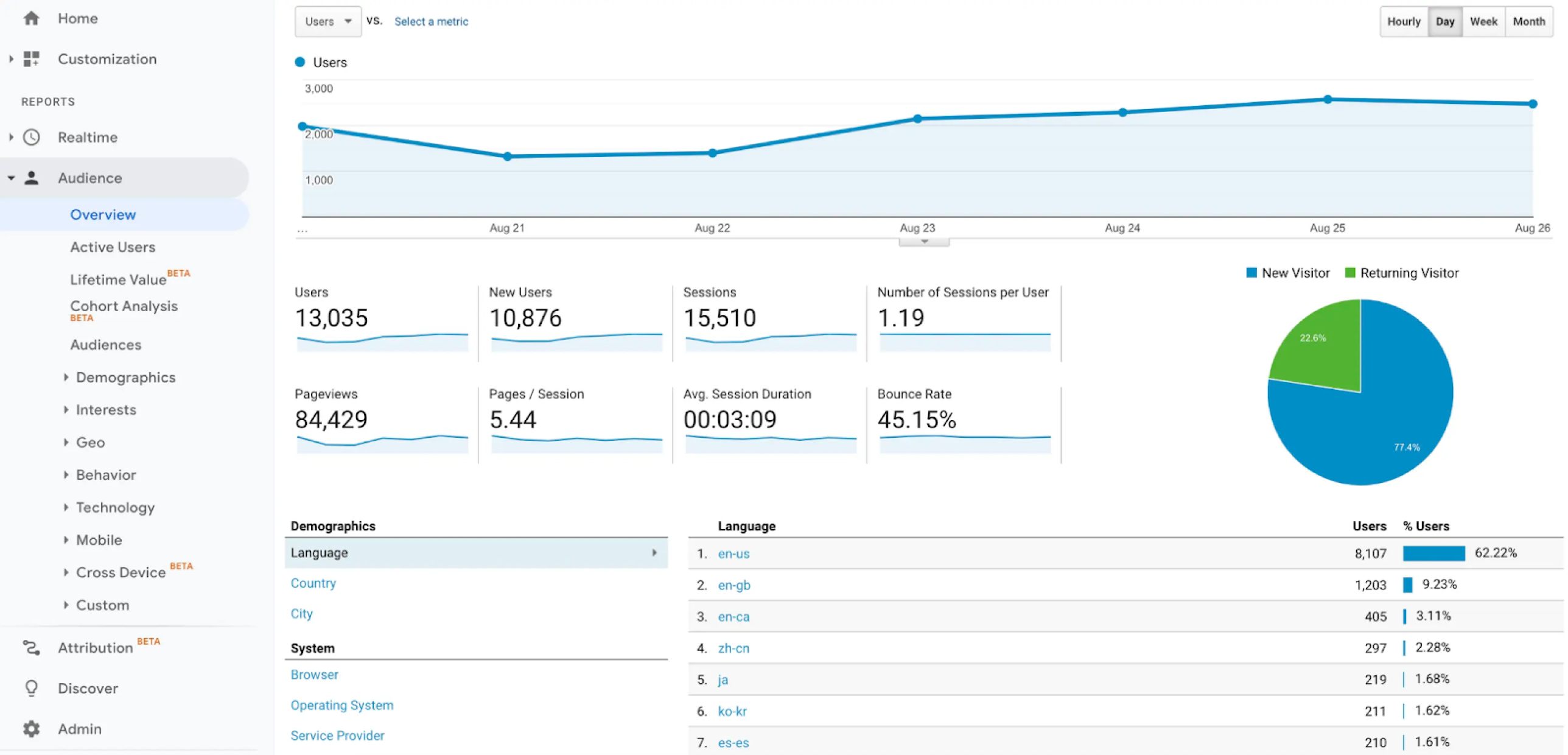
Define your goals
Before building any degree of customization, you should define what you are trying to influence. For example, the Livestorm team wanted to find a way to sell to enterprise companies at a higher annual contract value (ACV). They realized they could do this with the help of website personalization and made changes accordingly like removing the pricing page for enterprise companies and promoting the demo offer rather than the free trial.
Having a clear goal enables you to design a smart and high-converting personalization experience.
💡 Check-in: Write down the business problem you want to solve and what results you’d like to achieve.
Determine target audiences
Next, identify which companies you want to target by defining your ICP. This helps you pinpoint the universe of accounts that matter the most to your business. After identifying your ICP, you can break that down further into sub-segments to create custom experiences for each group.
Define your Ideal Customer Profile (ICP)
Here’s a quick refresher on how to define your ICP.
Step 1: Build the data foundation
Enrich your source of truth with accurate and fresh data. To accurately define your ICP, you’ll need complete firmographic and technographic data (like company size, technologies used, and industry) for accounts in your database.
Step 2: Define success criteria
Ask yourself what your business is trying to accomplish to define the success criteria for your ideal customer. If you’re looking to maximize revenue growth you may want your success criteria to be a high annual contract value (ACV). If your main goal is long-term customer retention, you may want to focus on finding companies with a high lifetime value.
Step 3: Identify your best-fit customers
Look at the past to select your best-fit customers. Utilizing the data foundation you established in step one and the success criteria you selected in step two, analyze historical data to gather quantitative learnings on your best-fit customers.
Step 4: Conduct your analysis
Analyze your data set for shared firmographic and technographic traits like industry, number of employees, or country, for example. You may notice that your customers with the highest ACV all have 100-1,000 employees, use Salesforce, Clearbit, and Mutiny, and have raised over $10M.
Step 5: Outline your ICP
Based on the shared traits established in the step above, create a silhouette of your ICP. Your ICP may look something like this:
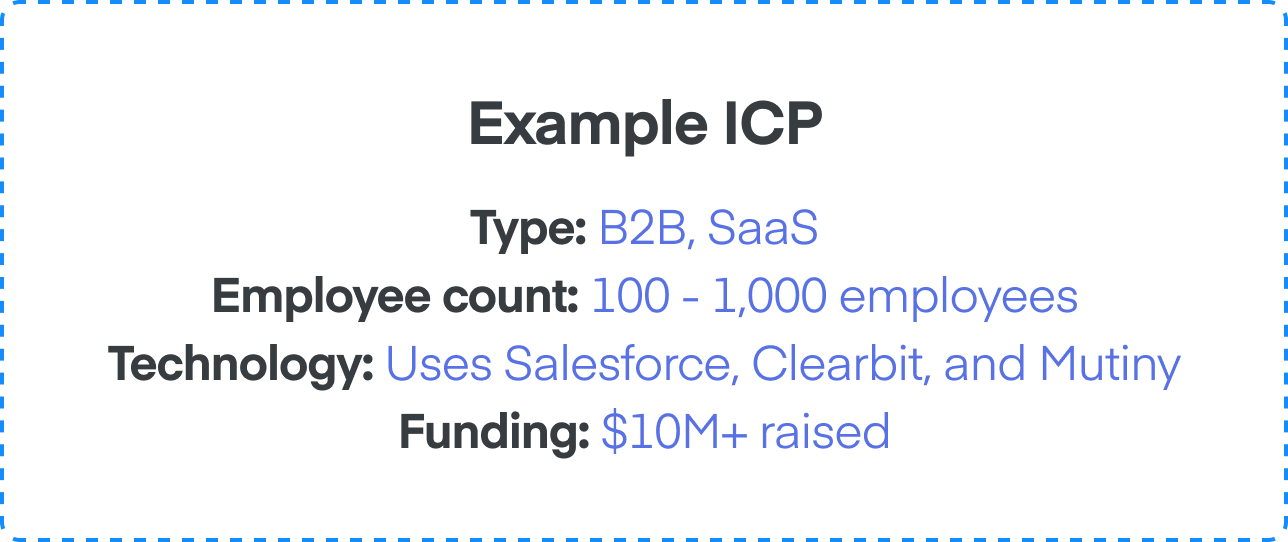
Identify the number of companies in your ICP
With those ICP parameters in place, you can use a tool like Clearbit to identify net-new and existing ICP companies.
In the example below, the ICP “mid-size venture-backed B2B SaaS companies” is defined as companies with 10–1,000 employees, more than $10M in funding raised, and those that use technologies like Salesforce, HubSpot, or Marketo.
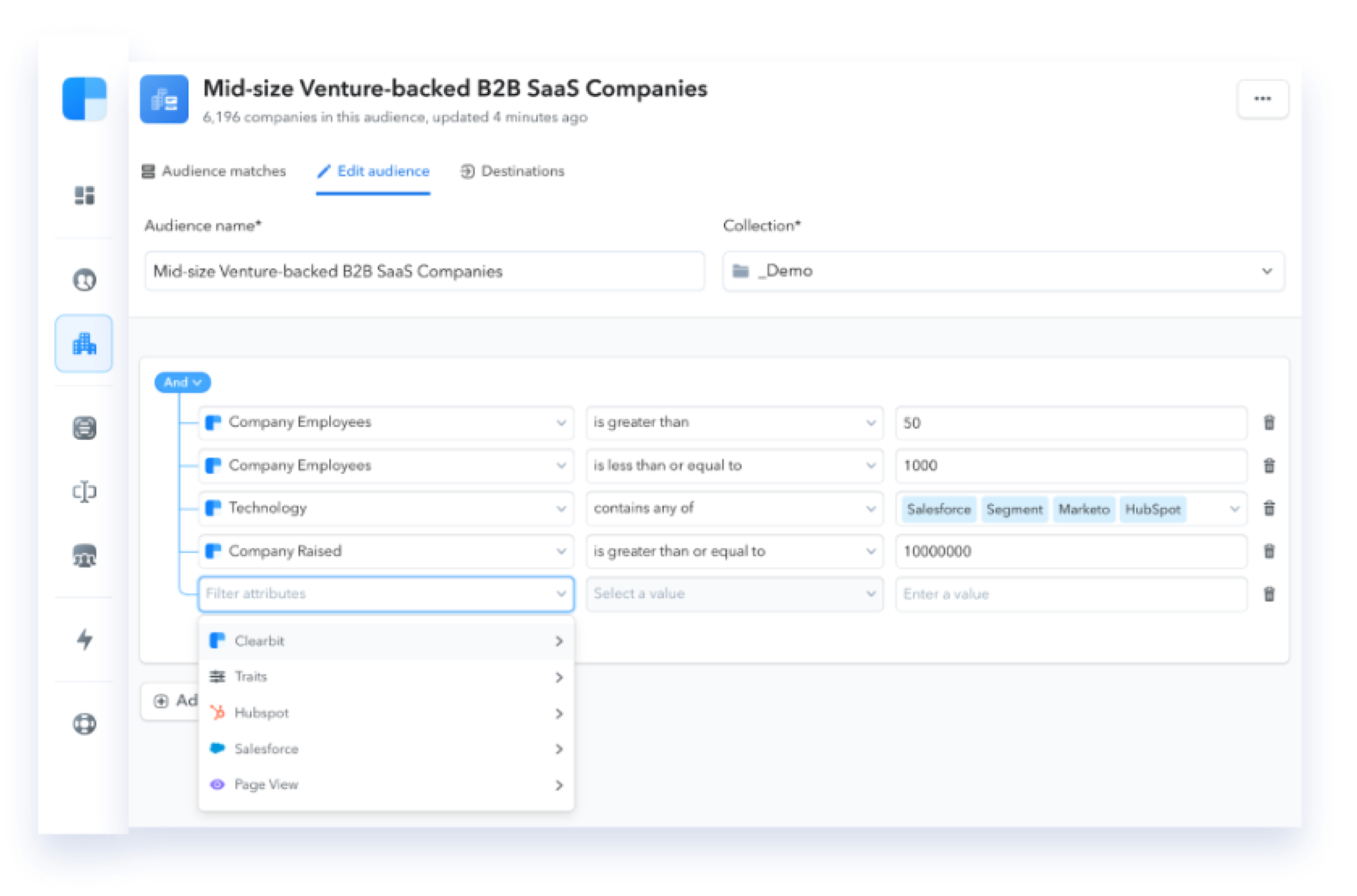
Clearbit will then generate an audience that fits the outlined criteria. This will help you identify the number of companies in your ICP.
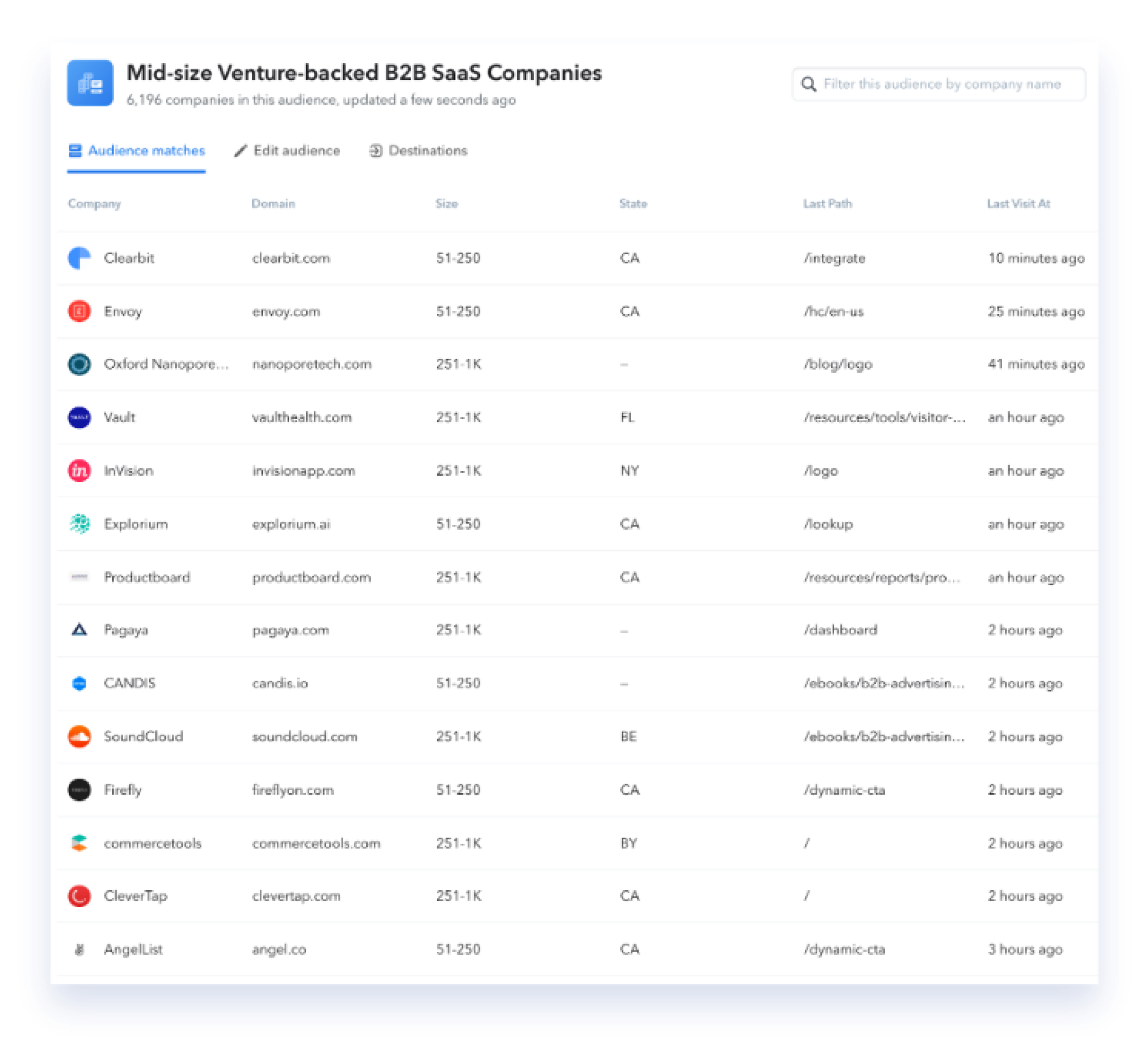
You can also adjust your audience parameters to identify only accounts in your ICP that have visited your website in the past 30 days. This will help you understand the number of accounts that would see your personalization experiment if you targeted your entire ICP list.
Group your ICP into audience sub-segments for more precise targeting
Next, you’ll need to create smaller audience segments within your ICP audience for more targeted personalization efforts. You can divide your ICP into groups using attributes like industry, company size, or employee persona. This is where having a large enough volume of web traffic comes into play. If you’re starting with a few thousand monthly website visitors, once you identify only ICP visitors and create more targeted sub-segments, that audience becomes extremely small.
Layer in intent
Once you’ve defined your audience based on key fit criteria, it is also helpful to layer in first-party intent. As companies repeatedly visit webpages, you’ll want to customize their journey based on what you know about them.
For example, if a visitor is reading multiple blog posts on your site about email marketing, you may want to personalize your website to highlight related product functionality or a case study that shows how customers have seen success with your email marketing solution.
Consider relationship history
Lastly, consider the visitor’s relationship with your company. While website personalization is often discussed as a way to convert new customers, it is also a way to deliver value to existing customers and can help with retention and upsells. The information you display and the experiences you create are going to look very different for prospects and customers. As you can see in the table below, website and landing page personalization should be utilized throughout the buyer’s journey (in phases two and four).
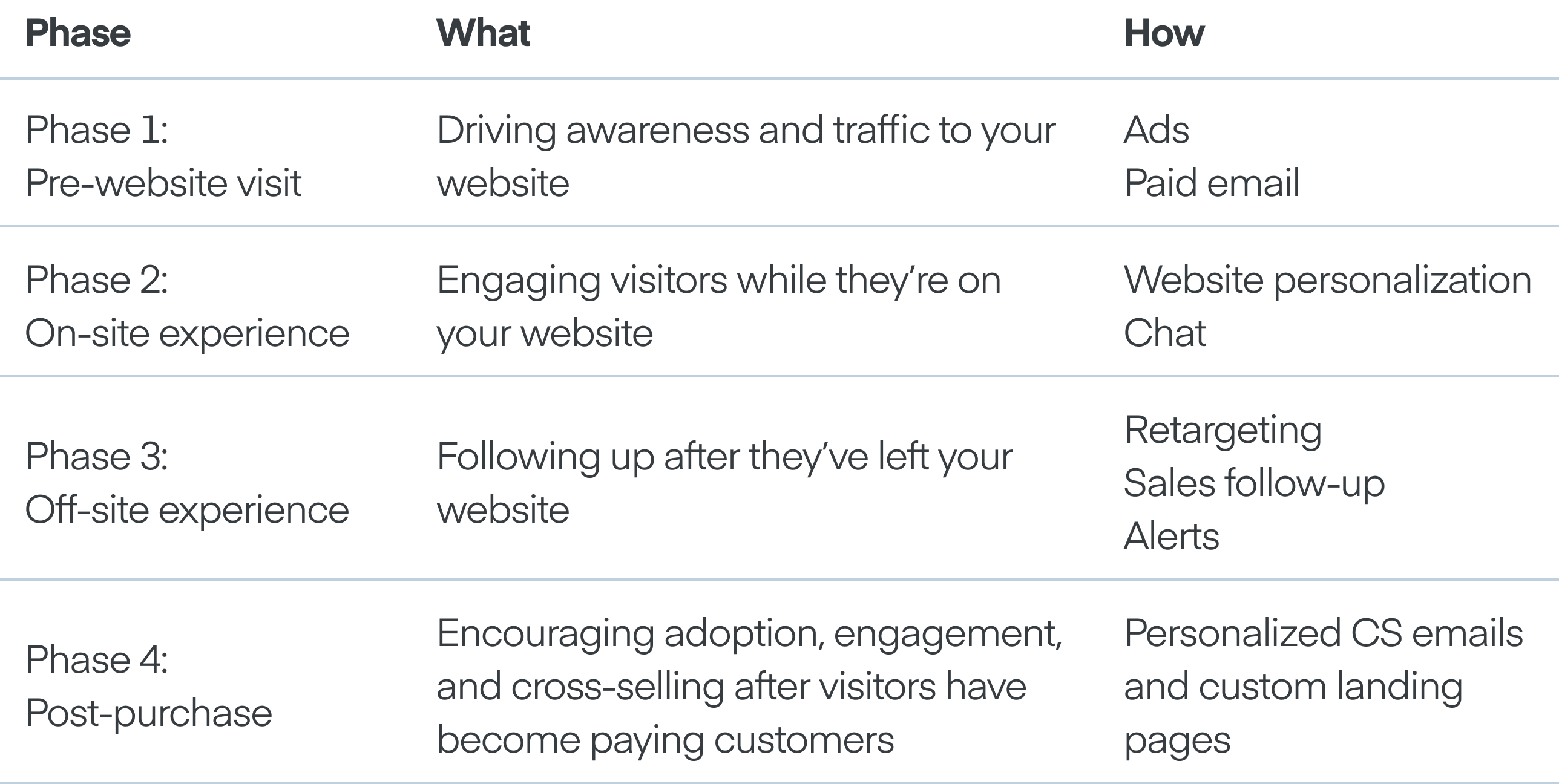
Mapping out your audience in advance helps ensure you have a viable market and are targeting the right companies based on fit and intent.
💡 Check-in: Define your ICP and identify key sub-segments for personalization. Consider intent and relationship history, as well.
Website personalization tools
You need the right stack to implement a scalable website personalization strategy that drives conversions. That typically includes an IP intelligence tool, a personalization platform, and a chat platform. Some teams may also choose to code their own personalization solution, but this requires far more resources, time, and isn’t as scalable.
Clearbit and Mutiny are two tools that we recommend. Clearbit enables you to identify and target website visitors and Mutiny provides a top-notch platform to build and measure customized experiences. You will likely also need other tools like a CRM (Salesforce or HubSpot, for example) and CDP (like Segment) to support the flow of data between tools.
💡 Check-in: Do you have the right tools in place? Take a look at your martech stack and identify any gaps before getting started.
Recap of key website personalization ingredients
